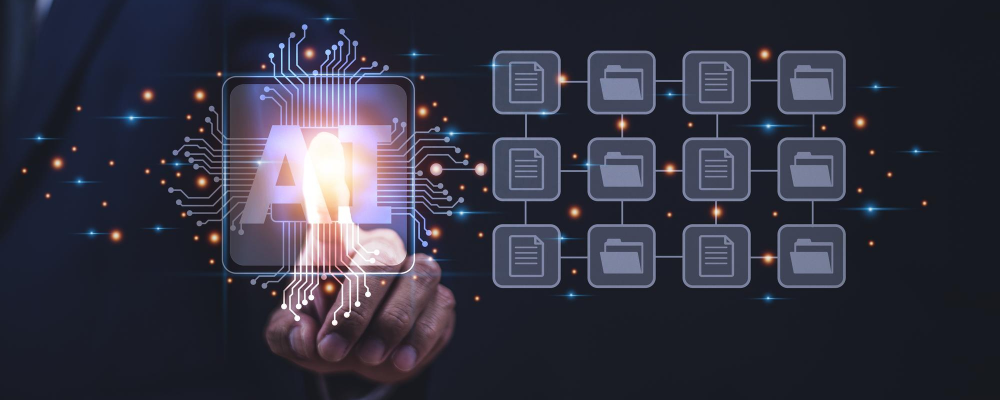

In the race to integrate Artificial Intelligence (AI) into business operations, one critical question often gets overlooked:
How does AI align with our Environmental, Social, and Governance (ESG) commitments?
As ESG factors increasingly shape investor priorities, consumer preferences, and regulatory expectations, organizations must ensure that AI is not just powerful—but also purposeful. Used wisely, AI can become a strong enabler of ESG outcomes. Misused, it can quickly erode trust and widen the very gaps ESG seeks to close
ESG stands for Environmental, Social, and Governance—a set of non-financial criteria used by stakeholders to assess an organization’s ethical impact, risk profile, and long-term sustainability.
- Environmental: Focuses on how a company affects the planet—carbon footprint, energy use, waste, water, and climate strategy.
- Social: Measures a company’s impact on people and society—including diversity, labor practices, human rights, data ethics, and community engagement.
- Governance: Evaluates transparency, accountability, ethical leadership, board structure, and compliance with laws and regulations.
Once seen as a reporting burden, ESG has now become a strategic imperative for companies that want to earn trust, attract investment, and build future-ready business models.
AI can play a pivotal role in tackling environmental challenges:
- Energy Optimization: AI improves energy efficiency in smart buildings, factories, and data centers by predicting usage patterns and automating adjustments.
- Climate Forecasting and Risk Analysis: Machine learning enables accurate prediction of extreme weather events and helps model the impact of emissions.
- Circular Supply Chains: AI helps companies reduce material waste, lower logistics emissions, and monitor environmental KPIs across global networks.
However, we must acknowledge that AI itself—especially large models—can have a heavy energy and water footprint. The development and training of foundation models often rely on high-powered GPU clusters, consuming vast resources.
To align AI with environmental goals:
- Enterprises should invest in energy-efficient models and green AI infrastructure.
- Transparency around model carbon accounting and data center efficiency is becoming a stakeholder expectation.
In Europe:
Under the Corporate Sustainability Reporting Directive (CSRD) and EU Green Deal, companies must disclose detailed data on their environmental impact—including how technologies like AI contribute to or mitigate emissions.
In California:
The California Climate Corporate Data Accountability Act (SB 253) and GHG Emissions Disclosure Law (SB 261) will require large companies doing business in California to report scope 1, 2, and eventually scope 3 emissions—creating accountability for energy-intensive digital infrastructure.
The “S†in ESG focuses on human well-being, inclusion, and social responsibility—areas where AI introduces both opportunity and risk:
- Bias and Fairness: AI trained on biased data can amplify discrimination. Organizations must adopt fairness-aware models and inclusive data sets.
- Accessibility: AI can empower people with disabilities through voice recognition, language translation, or adaptive technologies.
- Workforce Impact: With AI automating jobs, companies must take the lead in reskilling, promoting digital equity, and ensuring human-AI collaboration.
Companies should also ensure that data privacy and ethical use are treated as social responsibilities, not just compliance obligations.
In the EU:
The AI Act places restrictions on high-risk AI systems that impact fundamental rights—such as hiring, credit scoring, or biometric surveillance—ensuring that social consequences of AI are proactively managed.
In the U.S.:
California’s Consumer Privacy Act (CCPA) and emerging federal guidelines demand transparency in how personal data is used to train and power AI systems. Social equity and digital rights are becoming core to the AI conversation.
Good governance in AI is not just about rules—it’s about cultivating trust:
- Transparency: Clear documentation and explainability of AI decisions are essential for stakeholder trust and regulatory compliance.
- Accountability: Organizations must define who is responsible when AI makes—or contributes to—critical business decisions.
- Regulatory Readiness: With frameworks like the EU AI Act, OECD AI Principles, and NIST AI Risk Management Framework, compliance is evolving fast.
This is where communities like the CAIO Circle (Chief AI Officers Circle) provide invaluable leadership. As a global think tank for responsible AI, the CAIO Circle brings together senior executives and Chief AI Officers to:
- Shape governance standards that align innovation with ethical oversight.
- Promote cross-industry collaboration on AI risks and ESG alignment.
- Drive responsible AI education and policy engagement.
Through curated discussions, policy input, and community-driven frameworks, the CAIO Circle helps turn governance from a compliance task into a strategic asset.
Aligning AI with ESG goals isn’t just the right thing to do—it’s a strategic differentiator. Organizations that lead in ethical, inclusive, and transparent AI will:
- Attract top talent and value-aligned investors.
- Future-proof their operations against regulation and reputational risk.
- Deliver sustainable growth for customers, employees, and society.
To get there:
1. Audit your AI use cases through an ESG lens.
2. Collaborate across technology, sustainability, legal, HR, and strategy teams.
3. Commit to designing AI systems that are efficient, fair, and accountable.
As we shape the next generation of intelligent systems, let’s ensure they don’t just drive progress—they define purpose.


